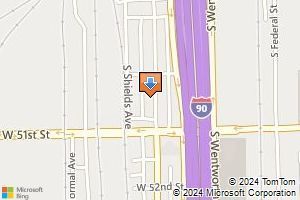Welcome to Fuller Park
Fuller Park is a neighborhood located on the South Side of Chicago, Illinois. Named after Chief Justice Melville Fuller, it is a community that exudes a strong sense of pride and heritage.
The neighborhood is home to a diverse population, contributing to its rich history and cultural significance.
Fuller Park is known for its well-maintained residential streets lined with brick houses and cozy bungalows. The architecture showcases a mix of traditional and modern designs, reflecting the evolution of the community over the years.
One of the standout features of Fuller Park is the expansive park that anchors the neighborhood. Named after its namesake, Chief Justice Fuller Park provides ample green space for recreational activities, community events, and family outings. The park boasts lawns, walking trails, basketball courts, a playground, and a baseball field, serving as a central gathering place for residents.
The community spirit in Fuller Park is evident through various local organizations and events. Residents actively participate in neighborhood improvement initiatives, such as cleanup campaigns and community gardens.
Fuller Park offers convenient access to a range of amenities and services. The neighborhood is dotted with small, locally-owned businesses, including grocery stores, restaurants, and specialty shops. Public transportation options, including buses and nearby train stations, make commuting to downtown Chicago or other parts of the city hassle-free.
The educational opportunities in Fuller Park include several public and private schools serving the community, providing quality education to local students.
Overall, Fuller Park nurtures a sense of belonging and community engagement. Its rich history, diverse population, and commitment to improvement make it a desirable place to live for those seeking a close-knit neighborhood experience in the heart of Chicago.
-
Looking to Buy? Search Fuller Park listings
-
Interested in Selling? Request a Listing Presentation
-
Want More Information? Sign up for our Trends Report
For Sale in Fuller Park
-

4500 S Wells Street
$425,000
- 6 beds
- 2 baths
- Fuller Park
- Two to Four Units
-

4250 S Wells Street
$39,900
- Fuller Park
- Land
-

4729 S Shields Avenue
$50,000
- Fuller Park
- Land
-

4338 S Shields Avenue
$50,000
- Fuller Park
- Land
-

319 W 47th Street
$20,000
- Fuller Park
- Land
-

317 W 47th Street
$20,000
- Fuller Park
- Land
-

5435 S Princeton Avenue
$149,900
- 9 beds
- 4 baths
- Fuller Park
- Two to Four Units
-

245 W 43rd Street
$324,900
- 3 beds
- 2 baths
- Fuller Park
- Detached Single
-

4752 S PRINCETON Avenue
$160,000
- 6 beds
- 4.1 baths
- Fuller Park
- Two to Four Units
-

5202-04 S Princeton Avenue
$37,000
- Fuller Park
- Land
-

142 W Swann Street
$329,000
- 5 beds
- 2 baths
- Fuller Park
- Detached Single
-

4452 S Shields Avenue
$324,950
- 8 beds
- 2 baths
- Fuller Park
- Two to Four Units
-

4243 S Princeton Avenue
$445,000
- 3 beds
- 2.1 baths
- Fuller Park
- Detached Single
-

4451 S Princeton Avenue
$249,900
- 4 beds
- 2 baths
- Fuller Park
- Detached Single
-

5018 S Princeton Avenue
$17,000
- Fuller Park
- Land
-

5238 S PRINCETON Avenue
$16,000
- Fuller Park
- Land
-

5210 S PRINCETON Avenue
$17,000
- Fuller Park
- Land
-

4765 S Shields Avenue
$29,000
- Fuller Park
- Land
-

4904 S Princeton Avenue
$19,000
- Fuller Park
- Land
-

5134 S Princeton Avenue
$15,000
- Fuller Park
- Land

Want more detailed information on Fuller Park?
Get a Trends Report delivered to your inbox monthly
Send Me Fuller Park Trends









